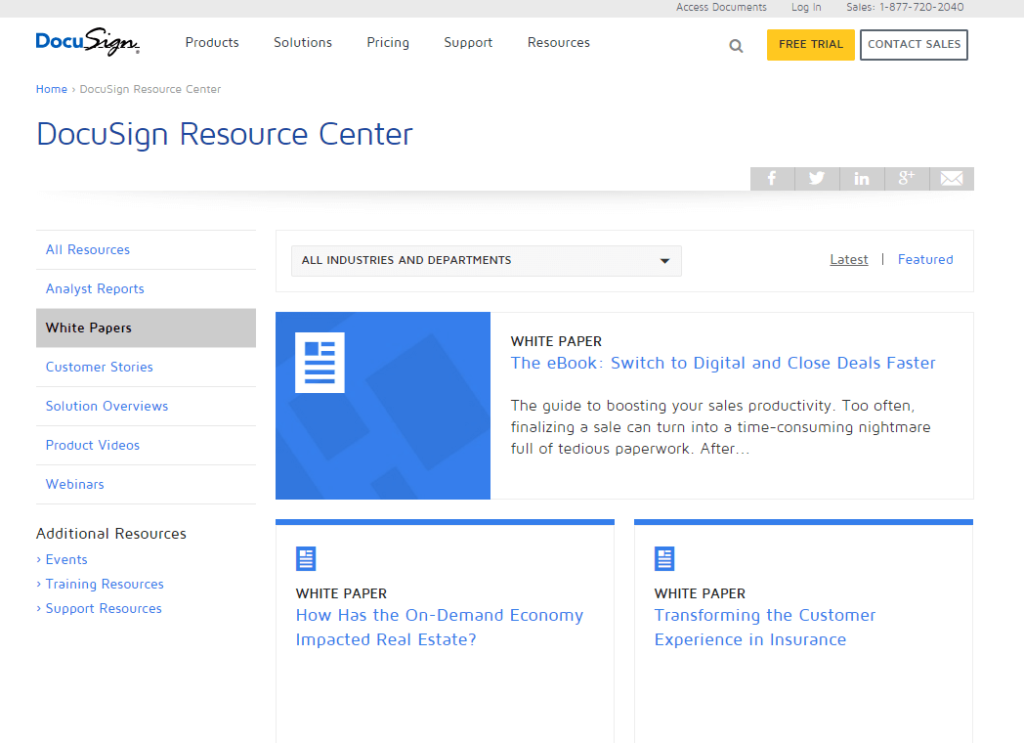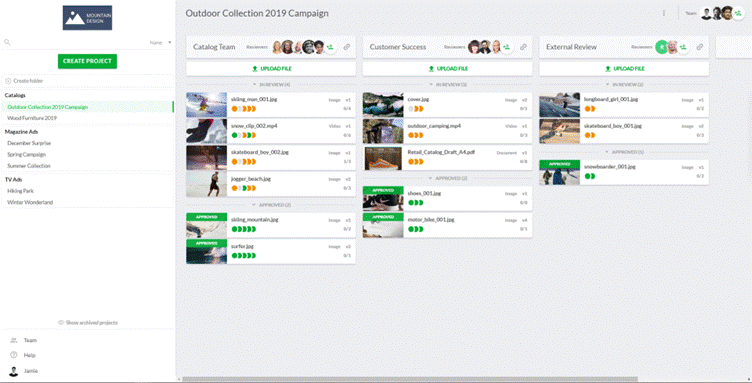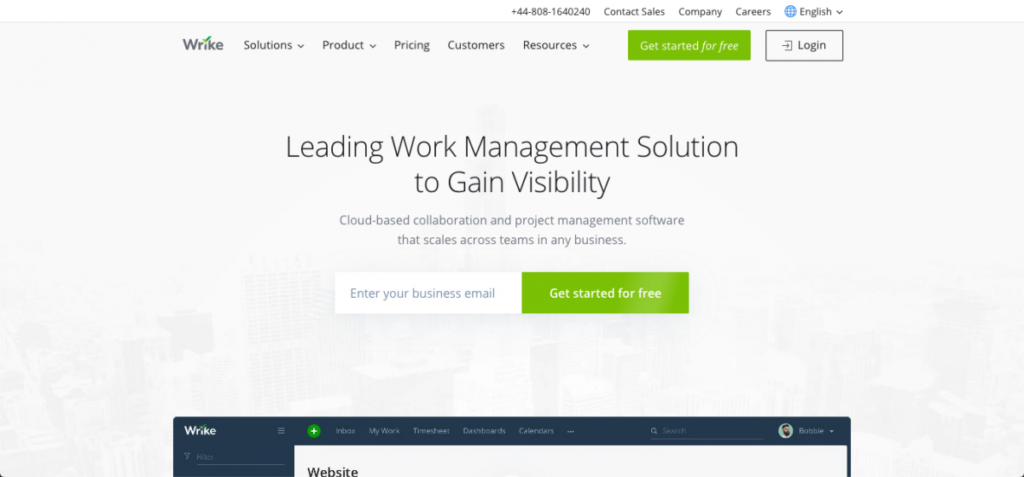Marketing project management is both exhilarating and demanding. As a marketing project manager, you must constantly adjust your approach to make sure that every project runs smoothly and results in an effective end product. To help you see this tool in a new light, here’s our comprehensive guide to marketing project management:
What Is Marketing Project Management?
This term refers to the development and supervision of a marketing project. It is a particularly challenging aspect of management for a few reasons.
Firstly, marketing teams are made up of multidisciplinary professionals who must work in harmony to stitch their various deliverables together. A lot of abstract thinking is often required as well, and the exchange of subjective opinions means that the project has a certain level of adjustability.
Marketing projects also come in all shapes and sizes. To get a better idea of what is involved in marketing project management, let’s take a look at some examples .
An Explainer Video
You’ve probably seen a few explainer videos. Businesses use these videos to explain their products or services. In fact, 93% of businesses believe that using videos has increased users’ understanding about their products.
Let’s imagine that your company, ABC Apples, is planning to create an explainer video. Before distributing tasks and coordinating the review, the marketing project manager has to plan the scope and goals of the project.
A Case Study
Businesses use case studies to highlight their successes and share information about their products or services.

Now ABC Apples is planning on releasing a case study that will highlight an amazing customer success story. Again, the marketing project manager will be responsible for coordinating the process and creating an effective, attractive case study.
A White Paper
Businesses publish white papers to establish themselves as leaders and opinion-shapers in their industry. These complex papers demand quality and thoroughness.

In its new white paper, ABC Apples aims to release new findings that will transform ts industry and secure vast amounts of PR coverage. The marketing project manager will be tasked with coordinating this process from start to finish.
The Marketing Project Management Process
Preparing to manage a marketing project? To build the right foundations, you’ll want to look at the established best practices. Here’s a detailed look at the five steps in the project management process:
Step 1: Initiate
If you execute the first step well, the following steps will naturally fall into place. But if you miss the mark here, you might find that you make mistakes later in the project. Here’s how to own the initiation phase:
Determine the business case.
The first question to ask is whether the imagined project is makes financial sense. Your organization has finite resources and time. So should they be allocated to this project?
A business case is your opportunity to present a compelling, data-driven argument for your project. In this phase, it’s important to appropriately manage expectations and maintain accuracy.
For further exploration, check out:
A Business Case Template That Takes Your Projects to the Next Level
Create a project charter.
This project charter should define the overall project objective and clearly outline all the stages of the project. It should then outline the roles and responsibilities of every person involved in the project.
If you invest the time to create this important document before you start working, you can save lots of headaches in the future. All too often, marketing projects spiral out of control, which causes frustrations and missed deadlines.
Define the marketing project scope and goals.
Your project scope is a critical tool that outlines the shape and boundaries of your goal. By outlining your specific goals, deliverables, tasks, costs, and deadlines, you can avoid scope creep (which involves the boundaries of your project disappearing).
It is important for you to get all the necessary stakeholders to sign off on your project scope statement. In other words, everyone should be aware of the project and its boundaries, which should make life much simpler moving forward.
For further exploration, check out:
How to Create a Robust Project Scope
Collect your marketing project templates
Keep in mind that you don’t have to create all plans, reports or documents from scratch. Using templates is a good way to get started immediately while using resources that others have already created.
Furthermore, project management templates are available for all imaginable situations and use cases. So, get ready to use these existing resources.
For further exploration, check out:
50+ FREE Project Management Templates
Step 2: Plan
Now that your project is off the ground, it’s time to start planning. You can build solid foundations to make sure you move in the right direction.
Create buyer personas.
You should start by creating rich and detailed buyer personas. These personas give your team an idea of who your audience is, what they want, what their values are, and how to address them. They can also help you properly tailor your project.
Over the course of the planning phase, a lot of specific questions will come up. For example, a copywriter might ask about messaging. Since these kinds of answers can often be found by referring back to your buyer personas, they should be detailed!
For further exploration, check out:
Your Effective Buyer Persona Template
Craft a creative brief.
You should look at your creative brief as a detailed map you can use to achieve success. This brief will outline important information, such as the target audience for the project, the necessary deliverables, and the appearance of the finished project.
???? Use Filestage to collaborate on your creative brief (and all following deliverables) together with your colleagues and clients.
This document is essential to success. If you create a quality creative brief, you will find it easier to make important decisions later in the project.
For further exploration, check out:
The Ultimate Creative Brief Template
Create a solid project plan.
Your project plan will dig into the logistics of a project. By outlining information such as timing, budgets, management, and quality control, you’ll guarantee that the project runs according to plan.
The project plan will become a key document for your entire team. It will determine the overall goal of the project, as well as the steps required to achieve that goal.
For further exploration, check out:
The Only Project Plan Template You’ll Ever Need.
Set feasible project milestones.
Project milestones help you break the project into bite-sized chunks. Therefore, you can get you a better idea of the project’s deadlines and goals. These milestones are part of the bigger picture, and they aren’t as granular as tasks.
Accurate and detailed project milestones will help you make sure your project is moving along at an appropriate pace. If your project milestones are feasible, you’ll never miss a deadline again.
For further exploration, check out:
What Are Project Milestones And How to Use Them
Create a realistic project timeline.
You and your team will need to be to have an overview of the project at a glance, so you can make sure that everyone is informed.
Your project timeline should include a series of tasks, each of which should be accompanied by a due date. This tactic will help you stop potential blockers and shine a light on any weaknesses in your project.
For further exploration, check out
How to Create a Project Timeline
Conduct an inspiring kickoff meeting.
A kickoff meeting is your chance to sit with your stakeholders and agree on clear objectives and desired outcomes. All of the documents above will be discussed and finalized, so all that’s left is to get started!
You should structure your kickoff meeting in a way that’s efficient and effective. It’s a great chance to set a positive tone for the project, and get off on the right foot.
For further exploration, check out How to Conduct a Kickoff Meeting
Step 3: Execute
Now that you’ve green-lighted your project, it’s time to get to work. As a marketing project manager, you’ll guide your team throughout the entire process. Your job is to make sure that the project moves according to the plan defined in the previous phase.
Create marketing content.
Over the course of your project, your team will collaborate to produce a wide range of marketing content. The possibilities are endless, so you’ll want to familiarize yourself with the key pieces of marketing content.
Every piece of collateral should adhere to the principles you outlined in the previous stage. In other words, you should address your buyer personas and help them champion your marketing objectives.
For further exploration, check out
The Massive Guide for Better Marketing Materials
Rely on internal feedback loops.
To maintain quality throughout the course of the project, it’s important for you to regularly assess your marketing collateral. This practice can help ensure quality control and avoid unexpected surprises from popping up later in the project.
One important way to guarantee consistent feedback is to implement feedback loops. In these ongoing conversations, teams implement feedback and opinions to bring about new changes and improvements.
For further exploration, check out
How to Harness Feedback Loops in Your Projects
Step 4: Monitor and Control
As a marketing project manager, you must be able to coordinate regular assessments and keep a close eye on the way your project is progressing. Your interventions can make sure that the project is going according to plan.
Regularly create project status reports.
It is critical for you to be able to create project status reports for your clients. Many clients will regularly ask about the status,so you need to be able to show them an accurate, inspiring report that demonstrates the progress you’ve made.
There’s an art to creating a project status report that keeps your clients happy. The best reports will show that you’re making progress, being proactive, and keeping the big picture in mind. It’s also an opportunity to address concerns, so you should have necessary conversations about the budget and project scope.
For further exploration, check out
How to Create a Project Status Report
Step 5: Close
Once the collaterals have been completed, you’ll enter the final stage, which is your opportunity to ensure that the collaterals are in perfect condition, and that you end on a good note.
Review and approval
The review and approval phase is one of the most important steps in the project. It involves your entire team and stakeholders going through your marketing collateral with a fine-tooth comb. So you must request any changes with impeccable clarity.
Did you know? Review and approval software such as Filestage can help dramaticaly speed up your approval processes.
After the requested edits have been implemented, it’s time for stakeholders to sign off on the project and give their approval. This step might seem like the end of the project, but a few loose ends need to be tied up before your team enjoys a celebratory drink.
For further exploration, check out
How to Master the Review and Approval Process
Project completion
As the marketing project manager, it’s your job to make sure that the project is completely wrapped up, and that all the hard work was worth it.
You should go into this phase with a plan, so you’ll want to craft a project completion checklist. It will help you confirm that everything has been properly completed, and that you can rest easy. Now it’s finally time for that celebratory drink!
For further exploration, check out:
Complete Your Projects without Stress (Including Checklist)
Marketing Project Management Software
Phew! It’s not easy being a project manager! To make sure your project goes off without a hitch, you’ll want to get all of the help you can. Here’s a look at exactly what you need from your marketing project management software.
Project Overview and Transparency
Your project will involve a lot of discussion between your team members. A clear project overview is essential because it can keep your team focused on the bigger picture.
Your tool must also help your team to share and receive important updates, driving transparency on the project as a whole.
Involvement of Internal and External Stakeholders
Your external stakeholders need need simple access to your work with all of the correct permissions enabled. Your tool must make it simple to share drafts, otherwise you could lose track of version control and create a lot of issues.
Customized Workflows
Each member of your team must understand their responsibilities and tasks. If they overlook just one task, a lot of bottlenecks can be created and deadlines will be missed.
Task management makes it simple for you to assign tasks to your team and share updates, creating a personalized workflow for all.
Marketing Reporting
Accurate reporting is a precious asset. If you are equipped with lots of data, you will be able to adjust your activities and tailor your approach to get the best results for your client.
The best marketing project management tools make it simple to track results and the amount of time spent on projects. This can help you to refine your approach in the future.
Simple Review and Approval Processes
The review and approval process must be efficient and transparent. This ensures that every change is properly implemented and approved.
Your chosen tool should offer a foolproof review and approval process. This will help you to guarantee your projects hit the mark each time and that they are reviewed by the right people.
Here’s a closer look at some of the best software for marketing project management out there, which will help make a difficult job easier.
Filestage
Filestage is a marketing project management tool that helps marketing departments and agencies to do amazing work. The tool is a one-stop-shop for project managers to complete digital projects in one place.

The tool makes it easy for internal and external stakeholders to share, comments, and approve marketing content. This includes a variety of formats such as videos, graphics, documents, and more. Change requests can be made directly on any file, eliminating the need for frustrating feedback sessions that happen via email.

Say hello to fast and efficient review and approval workflows. The tool is currently used by leading companies like Razorfish, BBC, Lufthansa, Sixt, Bundesliga, and Jung von Matt.
Brightpod

Brightpod is software for marketing project management that aims to remove the chaos from this process. While this solution is popular, it isn’t flawless.
Some customers take issue with the steep prices and lack of integrations. Its lack of a to-do list can also make it tough for your team to stay on top of their various tasks and reminders, which can really complicate the review and approval process.
Wrike

Wrike is project management software that gives teams full visibility and control over their tasks. Again, its steep pricing is a turnoff for many users, and a difficult learning curve means that users require time and training to get up and running.
Some customers have also complained about its delayed customer support and its reporting tool, which cannot export simple reports.
Conclusion
We hope this comprehensive guide to marketing project management has helped you see your project management process in a new light. You have a difficult job, and self-reflection is one of the keys to success. Good luck!




